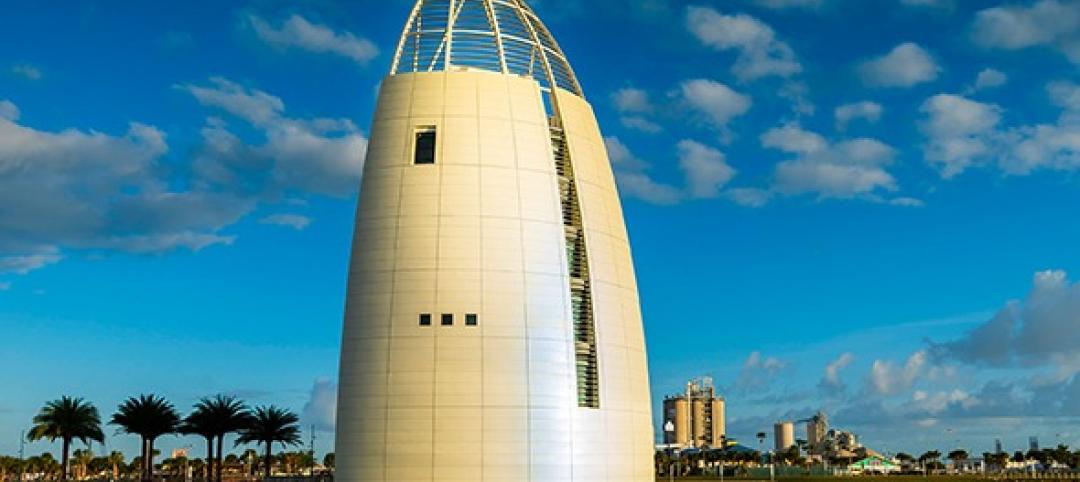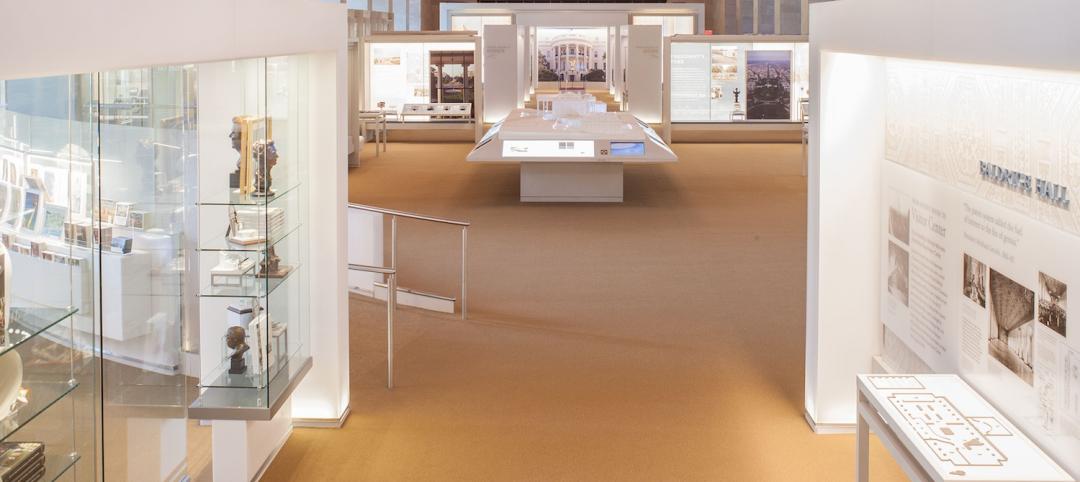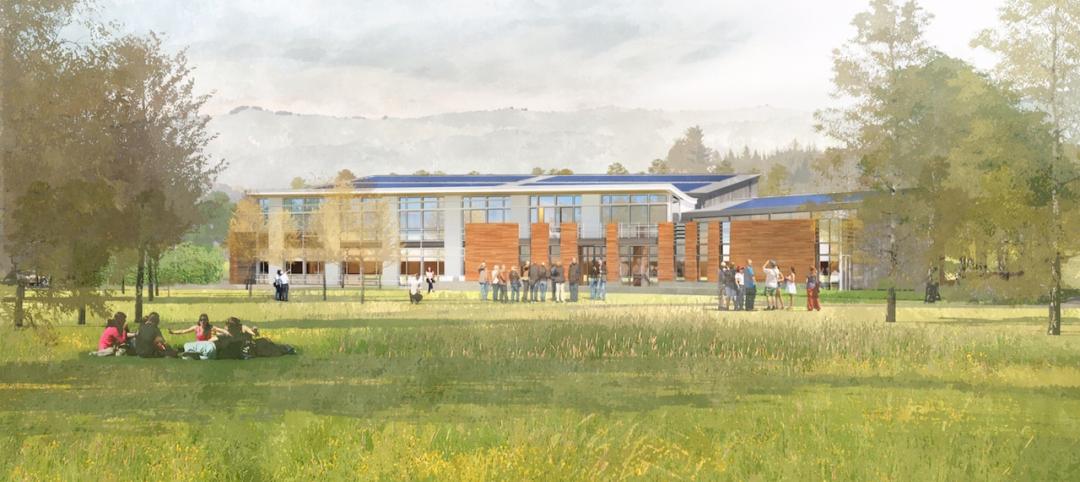 |
|
When rebuilding the observation tower, existing brick was taken down to a constant course, which allowed new brick to blend at the match line. |
For 38 years, the Pere Marquette Depot sat boarded up, broken down, and fire damaged. The Prairie-style building, with its distinctive orange iron-brick walls, was once the elegant Bay City, Mich., train station. The facility, which opened in 1904, served the Flint and Pere Marquette Railroad Company when the area was the epicenter of lumber processing for the shipbuilding and kit homebuilding industries.
In 1953, the 9,300-sf depot underwent an atomic-age modernization to convert it into a Greyhound bus terminal. Classical features like the 66-foot-high observation tower, wraparound canopy, ornamental metal brackets, and porte-cochere were demolished. After the bus station closed in 1969, the property sat vacant for more than three decades.
It took the depot's owner, Great Lakes Center Foundation, from 2002 to 2005 to patch together $3.85 million from local, state, and national sources to begin an extensive but frugal renovation that would bring the building back to life as a community center run by the local Convention and Visitor's Bureau and as offices for the Bay Area Community Foundation.
The Building Team, headed by Quinn Evans | Architects of Ann Arbor, Mich., with local firms Gregory Construction as GC and MacMillan Associates Inc. as engineer, had a mess on its hands. The masonry walls were in decent shape, but the foundation was undermined and the interior was devastated by toxic pigeon guano and fire and water damage, which destroyed most of the ornamental plaster walls and ceilings. The mechanical equipment, boiler, piping, plumbing fixtures, light fixtures, and most of the wiring had been stripped.
The Building Team salvaged the wainscoting and most of the windows and doors, replaced missing tiled canopies, the Spanish clay tile roof, and the observation tower, and repositioned the depot for use as a twenty-first-century community and office building. Although the project did not seek LEED certification, recycled content, low-VOC materials, low-flow plumbing fixtures, radiant heating, and light-sensor controls were used.
“They've done a wonderful job with both the interior and exterior work,” said Reconstruction Awards judge David Callan, SVP Environmental Systems Design, Chicago. Fellow judge Ken Osmun, group president of construction at Wight & Co., Darien, Ill., marveled at the project's bang for the buck. “The budget was so low and they had to make the depot the focal point of the community. I can't imagine the challenges they had to overcome.” —Jay W. Schneider, Senior Editor

Related Stories
| Nov 7, 2014
NORD Architects releases renderings for Marine Education Center in Sweden
The education center will be set in a landscape that includes small ponds and plantings intended to mimic an assortment of marine ecologies and create “an engaging learning landscape” for visitors to experience nature hands-on.
| Oct 20, 2014
UK's best new building: Everyman Theatre wins RIBA Stirling Prize 2014
The new Everyman Theatre in Liverpool by Haworth Tompkins has won the coveted RIBA Stirling Prize 2014 for the best building of the year. Now in its 19th year, the RIBA Stirling Prize is the UK’s most prestigious architecture prize.
Sponsored | | Oct 19, 2014
The Exploration Tower in Port Canaveral dazzles visitors
With a mission to provide the experience of a lifetime, the Exploration Tower at Port Canaveral, Fla., is designed to inspire, as visitors learn about the history and nature of the port and beyond. SPONSORED CONTENT
| Oct 19, 2014
White House Visitor Center reopens in Washington, D.C.
Designed by SmithGroupJJR and Gallagher & Associates, renovated center shows public its unique role as office, stage, museum, park, and home.
| Oct 17, 2014
OMA, OLIN design unanimously chosen for D.C. elevated park
In the design, the ends of the bridge are pulled upward to form an "X" shape. It allows ample room for add-ons such as a cafe and performance space, in addition to open space for plazas, lawns, and urban agriculture plots.
| Oct 16, 2014
Perkins+Will white paper examines alternatives to flame retardant building materials
The white paper includes a list of 193 flame retardants, including 29 discovered in building and household products, 50 found in the indoor environment, and 33 in human blood, milk, and tissues.
| Oct 16, 2014
Rocky Mountain Institute breaks ground on net-zero Innovation Center
Encompassing the Rocky Mountain Institute’s 32 years of innovation, the new 15,610 square-foot facility will exhibit the principles of integrative design and energy and resource efficiency.
| Oct 15, 2014
Harvard launches ‘design-centric’ center for green buildings and cities
The impetus behind Harvard's Center for Green Buildings and Cities is what the design school’s dean, Mohsen Mostafavi, describes as a “rapidly urbanizing global economy,” in which cities are building new structures “on a massive scale.”
| Oct 15, 2014
First look: Blueprint revealed for proposed High Line project in Queens
Yet another High Line-esque project has been proposed, this time in Queens. A blueprint has been developed for a 3.5-mile stretch of abandoned railroad tracks, which would connect Rego Park to Ozone Park with a walkway and bike path.
| Oct 14, 2014
Proven 6-step approach to treating historic windows
This course provides step-by-step prescriptive advice to architects, engineers, and contractors on when it makes sense to repair or rehabilitate existing windows, and when they should advise their building owner clients to consider replacement.
















